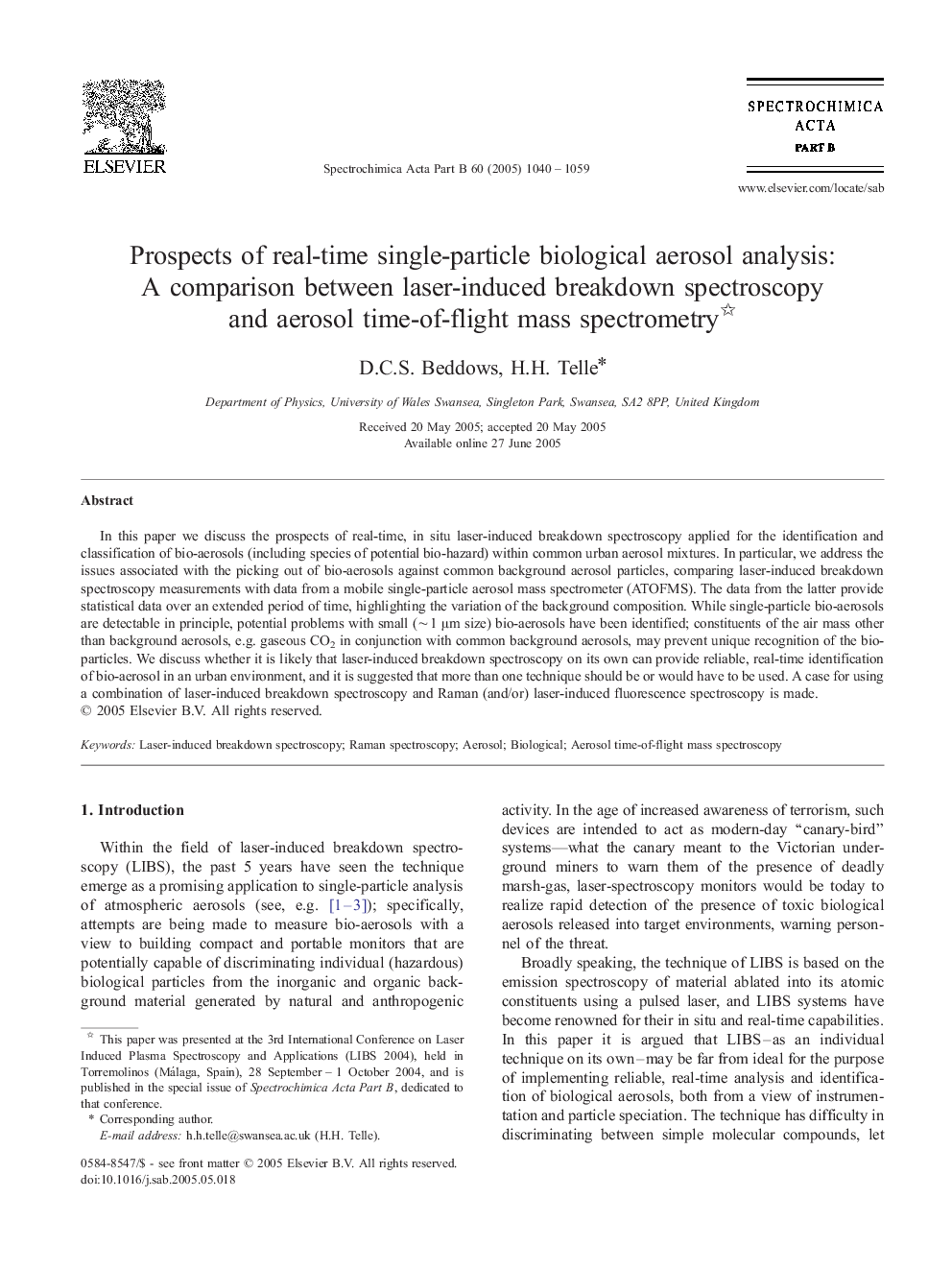| Article ID | Journal | Published Year | Pages | File Type |
|---|---|---|---|---|
| 9757244 | Spectrochimica Acta Part B: Atomic Spectroscopy | 2005 | 20 Pages |
Abstract
In this paper we discuss the prospects of real-time, in situ laser-induced breakdown spectroscopy applied for the identification and classification of bio-aerosols (including species of potential bio-hazard) within common urban aerosol mixtures. In particular, we address the issues associated with the picking out of bio-aerosols against common background aerosol particles, comparing laser-induced breakdown spectroscopy measurements with data from a mobile single-particle aerosol mass spectrometer (ATOFMS). The data from the latter provide statistical data over an extended period of time, highlighting the variation of the background composition. While single-particle bio-aerosols are detectable in principle, potential problems with small (â¼Â 1 μm size) bio-aerosols have been identified; constituents of the air mass other than background aerosols, e.g. gaseous CO2 in conjunction with common background aerosols, may prevent unique recognition of the bio-particles. We discuss whether it is likely that laser-induced breakdown spectroscopy on its own can provide reliable, real-time identification of bio-aerosol in an urban environment, and it is suggested that more than one technique should be or would have to be used. A case for using a combination of laser-induced breakdown spectroscopy and Raman (and/or) laser-induced fluorescence spectroscopy is made.
Related Topics
Physical Sciences and Engineering
Chemistry
Analytical Chemistry
Authors
D.C.S. Beddows, H.H. Telle,
